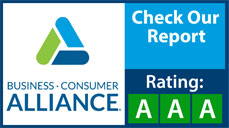disinfect
Hard (Non-porous) Surfaces
- Wear disposable gloves when cleaning and disinfecting surfaces. Gloves should be discarded after each cleaning. If reusable gloves are used, those gloves should be dedicated for cleaning and disinfection of surfaces for COVID-19 and should not be used for other purposes. Consult the manufacturer’s instructions for cleaning and disinfection products used. Clean hands immediately after gloves are removed.
- If surfaces are dirty, they should be cleaned using a detergent or soap and water prior to disinfection.
- For disinfection, most common EPA-registered household disinfectants should be effective.
- A list of products that are EPA-approved for use against the virus that causes COVID-19 is available hereexternal icon. Follow manufacturer’s instructions for all cleaning and disinfection products for (concentration, application method and contact time, etc.)
Always read and follow the directions on the label to ensure safe and effective use.
- Wear skin protection and consider eye protection for potential splash hazards
- Ensure adequate ventilation
- Use no more than the amount recommended on the label
- Use water at room temperature for dilution (unless stated otherwise on the label)
- Avoid mixing chemical products
- Label diluted cleaning solutions
- Store and use chemicals out of the reach of children and pets
You should never eat, drink, breathe or inject these products into your body or apply directly to your skin as they can cause serious harm. Do not wipe or bathe pets with these products or any other products that are not approved for animal use.
See EPA’s 6 steps for Safe and Effective Disinfectant Useexternal icon
Special considerations should be made for people with asthma and they should not be present when cleaning and disinfecting is happening as this can trigger asthma exacerbations. To learn more about reducing asthma triggers: https://www.cdc.gov/asthma/reduce_triggers.html
-
- Additionally, diluted household bleach solutions (at least 1000ppm sodium hypochlorite, or concentration of 5%–6%) can be used if appropriate for the surface. Follow manufacturer’s instructions for application, ensuring a contact time of at least 1 minute, and allowing proper ventilation during and after application. Check to ensure the product is not past its expiration date. Never mix household bleach with ammonia or any other cleanser. Unexpired household bleach will be effective against coronaviruses when properly diluted.
- Prepare a bleach solution by mixing:
- 5 tablespoons (1/3rd cup) bleach per gallon of room temperature water or
- 4 teaspoons bleach per quart of room temperature water
- Bleach solutions will be effective for disinfection up to 24 hours.






